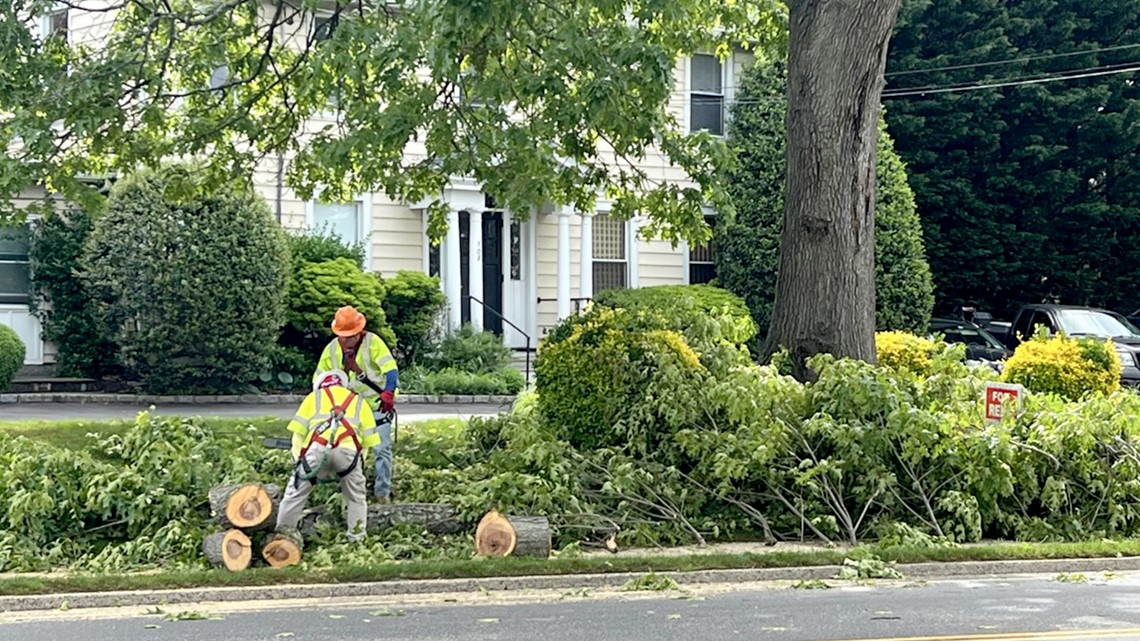As we celebrate blooming roses, ripening tomatoes and the pollinator frenzy in our backyards, we gardeners also should be aware of the downsides of summer: thunderstorms, tropical storms and hurricanes.
The U.S. National Oceanic and Atmospheric Administration is predicting an “above-normal 2022 Atlantic hurricane season,” and even as tornado season winds down, some threat remains year-round in parts of the country.
So what’s a gardener to do? After ensuring that people, homes and other structures are safe, our thoughts naturally turn to our beds and borders. We’ve poured our blood, sweat, tears and money into them, so protecting our investment – and the joy it brings – matters.
Before the storm
When storms are predicted, close patio umbrellas and store garden furniture indoors, if possible. Examine trees for cracked or broken branches and remove them before they’re torn by strong winds and sent flying. If those trees are large, hire a certified arborist to inspect them; the cost is nothing compared to the damage they could cause if they were to break or topple.
If your soil is moist — either naturally or from recent rain — apply 3 inches of mulch over beds and borders. That will offer protection against the soaking effects of a deluge, which could uproot trees, especially shallow-rooted ones like white pine, birch, willow and tulip poplar, among others.
Stake any newly planted trees to support them, and bring hanging baskets and planters into the home, shed or garage. If that’s not possible, line them up against the house or another protected spot.
Protect the flowers of small blooming plants by covering them with buckets or cloches topped with something heavy, like a brick, to hold them in place. Wrap larger plants with burlap secured with twine. Orchids, bromeliads, succulents, air plants and other tree-dwelling plants can be tied into place with fishing line.


Check that all vining plants are secured to their supports, and that the supports are firmly staked into the ground. If they don’t feel secure, remove the supports and lay them – and the plants – on the ground until the threat passes.
Lay row cover fabric over tender, young seedlings and pin it into place with landscape pegs.
After the storm
Once the storm has passed, clear away fallen fruit and vegetables, which could attract rodents if left to rot on the ground, and remove protection from around plants.
Inspect trees for damage. If you can safely remove hanging, broken branches while standing on the ground, do so. But avoid pruning anything higher than your head or climbing a ladder to prune. Those jobs are best left to a professional -- and that doesn’t mean a guy who shows up at your door with a chainsaw, who is unlikely to know what he’s doing and could be a scammer. The International Society of Arborists maintains a list of certified arborists on its website.


If a small tree has been toppled or uprooted, straighten and stake it as soon as possible, tamping the soil firmly as you replant it. Insert stakes into the ground around the trunk, attach twine, rope or cord to the stakes, and fasten them to the tree. Apply 3 inches of mulch or straw over the soil, keeping it 3 to 4 inches away from trunks, and water the tree regularly for the remainder of the growing season. This will help re-establish the root system.
Wind sway helps trees develop strong trunks and roots, so don’t keep the tree staked for longer than six months to a year.
Salt spray can desiccate, or dehydrate, trees and shrubs near the coasts, and they might not show symptoms until the following year. Gardeners in these areas can apply mulch around trees to retain soil moisture, and water deeply and repeatedly to flush out salts.
Refrain from pruning evergreens or removing dry tips until after new growth appears the following spring.
If high tides encroach upon your property, salt will likely form a crust on the soil’s surface, leading to dehydration. Most plants won’t survive such devastation, but the soil can be restored: Water deeply, then spread gypsum over the soil. It will react with the salt to form sodium sulfate, which will wash through the ground with repeated waterings. Continue watering deeply for the rest of the year.
—
Jessica Damiano writes regularly about gardening for The Associated Press. A master gardener and educator, she writes The Weekly Dirt newsletter and creates an annual Gardening Calendar of daily gardening tips. Send her a note at jessica@jessicadamiano.com and find her at jessicadamiano.com and on Instagram @JesDamiano.


